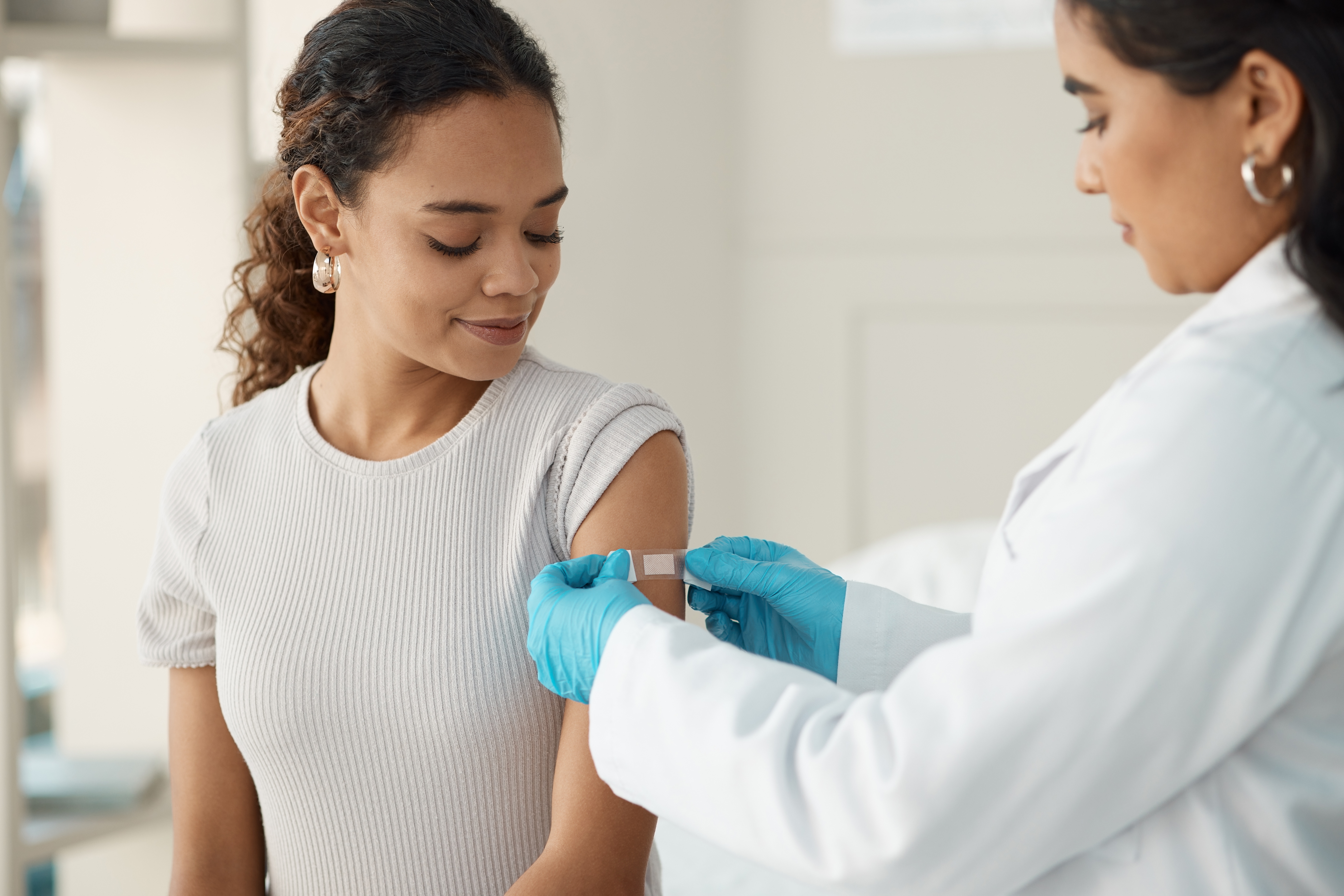
Real talk: Q&A with Roche about GENERATION-HD1
The HDBuzz team sat down (virtually) for an in depth Q&A session with the team at Roche to answer questions about tominersen and the recent halting of the GENERATION-HD1 trial


At the end of day 1 of the European Huntington’s Disease Network (EHDN) conference, the HDBuzz team (minus one) sat down for a zoom chat with the team at Roche to have a frank, candid discussion about the recent halting of GENERATION-HD1, the Phase 3 clinical trial that was testing the ability of the antisense oligonucleotide tominersen to lower HTT and improve outcomes for HD patients.
We spoke with Dr. Lauren Boak, the Global Development Leader on the Tominersen program at Roche, David West, the Patient Partnership Director in Roche’s global patient partnership organization, and Janet Rafferty, the International Communications Leader who manages external communications for the Huntington’s program at Roche.
Below, you’ll find copies of the questions we asked the Roche staff, and a summary of their response, taken from an automated transcription of the recorded interview. Direct quotes from Roche staff are indicated by “quotation marks”, everything outside those quotes are summaries written by HDBuzz writers, rather than direct quotes from anyone at Roche.

Understanding the current status of the trial:
Q: While dosing for the trial has officially been halted, the trial itself is ongoing – could you explain the current state of the trial?
A: As is standard practice for safety reasons, an independent data monitoring committee had access to, and was reviewing, all the data from the GENERATION-HD1 trial. In March, it was the recommendation from this committee to stop dosing, but continue to follow patients to better understand the impact of treatment on patients given the drug tominersen.
Lauren Boak from Roche explained, “The study is going to continue to follow the patients within the study framework, so when they come to visit the site their clinicians will follow [them] for the overall safety, safety review, and clinical outcome measures that were mentioned during the course of the clinical trial … It’s a really important part of their assessment of what happened in GENERATION-HD1.”
Continued participation from those enrolled in the study will allow Roche to extract as much valuable data as possible out for Roche’s, and the communities’, investment in GENERATION-HD1. This will be critical for understanding how tominersen affected HD patients – even if it didn’t have the outcome we all hoped for. These types of comprehensive datasets will help guide future trials. So while dosing for the trial has halted, the study is not formally finished and is ongoing.
Understanding the data which halted the trial
Q: Could you recap the timeline of events that led to the halting of GENERATION-HD1? How does the process work for communicating findings from the independent review committee to Roche and ultimately to the physicians and community?
A: For GENERATION-HD1, the independent review committee met every 4 months to review data from the trial that had been collected up to that point. Unlike anyone at Roche, the review committee assessed the unblinded data – this means they knew which treatment group, either treatment or control, each patient was assigned to.
During a regularly scheduled review committee meeting on Thursday, March 18th, “they made the assessment that the information in the data indicated that dosing should stop in all arms [of the trial]”, Lauren said.
“Lauren says, “And so we’re not in a position at this point yet to to share the data because we don’t want to share it in pieces…We really want to make sure that when we do share the data with the community that we can give as much of an explanation or description and understanding of what what this data means [as possible]”.”
That decision was then shared with a small team at Roche, who took the weekend to organize community communications. On Monday, March 22nd, Roche made the announcement that dosing in the GENERATION-HD1 trial would be halted in a press release.
They also developed a coordinated communication pipeline, so that right after the press release went out, they informed trial leaders so they could inform their trial participants. Also on that Monday, Roche sent out community letters and had calls with patient advocacy groups.
But as we all know, news travels fast, whether good or bad. And news of this magnitude meant that some HD community members and even trial participants heard that GENERATION-HD1 was being halted from unofficial pipelines. Lauren explains, “We understand that it was surprising that some people received this information from sources they weren’t expecting. But we were constrained by the situation we’re in. But we did communicate as quickly as we possibly could under the circumstances.”
It may not be obvious, but one of the reasons the news can’t be immediately shared with trial leaders and trial participants has to do with rules and regulations that companies must follow so as not to unfairly influence the stock market. With a study of this size and magnitude, any information related to the failure or success of the drug could influence stock prices. For that reason, with news like this, companies are obligated to make a press release before directly informing communicating with anyone about the results
Q: What are the next steps for analyzing, publishing, and sharing the data from the ongoing GENERATION-HD1 trial? How will that information be rolled out to the community – both scientists and families?
A: GENERATION-HD1 is a big trial with lots of data. Additionally, no one was planning to have dosing stop when it did. So while everything thought there would be more time to put a plan in place for data analysis, that actually needs to happen now. And it will be quite the endeavor.
The first step is to identify all the samples that were collected at each site across the world and have them shipped to a central location. Lauren explains, “And that has been a very big, big task. We have over 40,000 samples in this study”. Those samples include patient samples such as blood and cerebrospinal fluid, which will require special shipping and handling.
After sample collection and shipping, the next step will be data analysis. Roche wants to gather as much information as they can with this data, so they’re planning a very thorough analysis using lots of different metrics. Just a few of the things they’ll be looking at are levels of HTT protein, NfL, and how tominersen moves throughout the body from the lumbar puncture to the brain. “We’ve got actually over 20,000 different outputs, because there’s lots of different parameters to be evaluated”, Lauren said.
Analyzing 20,000 parameters from over 40,000 samples is a massive dataset by any account! To make this analysis happen as fast as possible, Roche has hundreds of people looking at the data and is using a staged approach where samples will be run in batches.

After the data has been analyzed, it all has to be examined to try and understand what it all means. This is the most critical part because it puts all of the data into context. Once Roche has this last piece, they’ll share what they’ve learned with the community. Lauren says, “And so we’re not in a position at this point yet to to share the data because we don’t want to share it in pieces…We really want to make sure that when we do share the data with the community that we can give as much of an explanation or description and understanding of what what this data means [as possible]”.
Q: Is there an anticipated date that you expect that whole process to be completed by? When can patients, clinicians, and others in the HD community expect to have access to information from the trial?
A: Unfortunately, this isn’t even something anyone at Roche knows the answer to right now, given the huge task they have to analyze all the data and samples they’ve collected. As we’ve all learned in the HD community, science can’t move fast enough. Lauren says, “But rest assured that we are doing the best that we can, with as much urgency as we can, and we will be sharing it with the community as soon as we can.”
Q: What lessons will be taken away from GENERATION-HD1? How will those lessons inform future trials moving forward?
A: Clinical trials are designed to examine very specific questions with very specific endpoints. This is so that at the end of clinical trials the data can be used to show that the outcomes were unequivocally caused by the treatment being tested. Because GENERATION-HD1 was a trial specifically focused on tominersen, much of what we’ll learn will specifically be about tominersen.
GENERATION-HD1 was also designed to treat people with clear HD symptoms. So the outcomes being measured in this trial will specifically tell us how tominersen worked in this patient population.
The design of the GENERATION-HD1 trial was very thorough, collecting lots of samples at various time points for an extended period – even in the placebo or control group. So researchers can look at participants in the placebo group to analyze the disease course as it generally occurs.
While this may seem trivial, these analyses alone will provide a critical comprehensive dataset for understanding the trajectory of HD using very sophisticated measurements. “The quality of the data will be very high. And so that will be very valuable to [the HD field], to understand the overall natural history of the changes of these of these markers in HD”, Lauren explains.
What if Tominersen is beneficial for a subset of patients:
“While Roche understands there still may be patients that want to use or continue using tominersen, the data don’t support a positive risk benefit for use of tominersen in HD. There are no compassionate use opportunities for the use of tominersen, because so far we don’t have evidence that it made anyone’s HD symptoms better, and unfortunately could have worsened some.”
Q: Is it possible that tominersen worked for some people and not for others? Is Roche doing the sort of analysis that will look at subgroups of participants that may have benefited from tominersen?
A: The short answer for this one is yes, and Roche is analyzing the data in a way that will determine if tominersen had different effects for different people. Lauren says, “We’re looking at what patient characteristics are at baseline when [participants] started this study or different stages of the disease that they are in and whether that means that they have a different response to the different doses tested in GENERATION-HD1”.
Q: Can people who got tominersen in GENERATION-HD1 or the open label extension who felt it was benefiting them apply for expanded access even though dosing was halted in the trials?
A: Unfortunately the short answer for this one is no. While Roche understands there still may be patients that want to use or continue using tominersen, the data don’t support a positive risk benefit for use of tominersen in HD. There are no compassionate use opportunities for the use of tominersen, because so far we don’t have evidence that it made anyone’s HD symptoms better, and unfortunately could have worsened some.
Ending of the trial
Q: Are GENERATION-HD1 participants staying in the trial even though dosing has ended?
A: It’s no surprise that the HD community is a fantastic one – it’s only through the support and involvement of HD patients and families that HD research has come this far. Lauren says, “We can share that over 85% of patients stayed in GENERATION-HD1 to complete their [off] treatment period through the 25 months, which is incredible”. Whatever the outcome of this trial, the HD families who participated have done an enormous service for the rest of the community – even if it may not benefit them personally. We owe them a deep debt of gratitude.
Q: How do you think the experience of GENERATION-HD1 will impact future trial recruitment within the HD community for Roche or other companies?
A: Unfortunately clinical trials don’t have a guaranteed outcome – clinical trials are performed to test if a drug will work, no matter how much research at the lab bench comes before. While GENERATION-HD1 didn’t end the way we all wanted it to, there’s still a lot we’ve learned. Not just based on the data generated by the trial, but based on the participant experience as well.

Lauren says, “It means that people will be more informed about the potential, the ups and downs, that there’s no guarantee. That’s why we need to do these clinical studies.” So while some community members may be more wary of the next trial, they may also ask more educated questions about trial participation, which is a good thing.
The future of HD drug discovery and tominersen at Roche:
Q: Does Roche have plans to continue to develop tominersen? Are there other HTT lowering or general HD therapeutics Roche is developing?
A: Currently, the fate of tominersen is unknown, because there’s still a lot of work to do to understand why the drug wasn’t having the desired effect . Roche will be waiting to see what the data says before making a decision about if and how to continue working with tominersen. Lauren says, “That information is not available yet. We don’t have the answer. I don’t have the answer. But we will be obviously sharing that as soon as we possibly can”.
But Roche’s response to continue working on HD therapeutics is clear – “Whether or not tominersen goes ahead or not, there is continued efforts in Huntington’s [disease]”, Lauren says. They have a company under the Roche Group umbrella, Spark Therapeutics, that has an early stage HD program that uses a totally different technology to lower levels of the Huntingtin protein. This means we’ll likely be seeing more from the Roche team as it relates to HD, with or without tominersen.
Q: Now that people at Roche have gotten to know the amazing people in the HD community, how are those that worked on tominersen feeling and dealing with the halting of GENERATION-HD1?
A: It’s probably no surprise that it’s easy to get invested in HD research as a scientist – there’s great science, super cool things are being done, and, perhaps most relevantly, the HD community is flat out amazing. Lauren got emotional as she shared that seeing the premature end to this trial has been very hard for her and the extended team at Roche. She says, “It was a very, very big blow emotionally, because we’ve all put our heart and soul into it”.
Lauren said she and others received support from the HD community, overcome with appreciation that she and Roche team members were thought of at a time when the whole community was in shock at the halting of GENERATION-HD1. The unexpected recognition that those at Roche were also devastated by the news is a testament to the resilience of the incredible HD community.
But there was no downtime at Roche. The halting of GENERATION-HD1 meant they had a lot of work left to do. Trying to understand what happened in the trial, Lauren says they were faced with “getting back up on back on the horse,… we need to execute on these analyses, we need to get everything working”.
“But Roche’s response to continue working on HD therapeutics is clear – “Whether or not tominersen goes ahead or not, there is continued efforts in Huntington’s [disease]”, Lauren says.”
What does this mean for future clinical trials
Q: What can we learn from GENERATION-HD1, not only from the process of trial design and final study outcomes, but also about interacting with the HD community? With the benefit of hindsight, could anything have been done differently?
A: Despite the unexpected outcome of the study, we’re going to learn a lot from GENERATION-HD1, about HD, about the way ASOs work, and about how we can improve for the next time. The entire field will benefit from a new understanding of how to incorporate digital biomarkers like data from watches and smartphones, ensuring capture of day-to-day home assessments and how to make that easier for people with HD, and how to successfully recruit and smoothly carry out a trial of this size at more than 100 sites across the globe.
As for the question of hindsight, Lauren Boak underscored that, as with all trials, “the design was based on the information that we knew at the time,” but acknowledged that there may have been different ways to choose the amount and frequency of dosing in the study. This was reiterated during a presentation at the EHDN conference by Dr. Scott Schobel, Group Medical Director and Clinical Science Leader for Roche’s tominersen program.
Perhaps most importantly, companies working in the HD space can learn from Roche’s commitment to incorporating feedback from HD family members from an early stage in the process of bringing the study into being. “We’ve been very happy to be able to partner with the community, even on the clinical design and planning aspects of this, and it’s been so, so rewarding and enriching for us. That is something that we hope that others will learn from, because I think that was very, very useful for our program…for things like reviewing protocol, how patients perceive certain things, how questions are asked in certain assessments, and burden at clinical sites.”
Roche has worked with members of HD-COPE and patient organizations to share what they’ve learned through community partnerships, so that other investigators can incorporate this into future trials. These findings were also formally presented in a poster at EHDN.
Q: How is Roche taking into account the experiences of trial participants that may fall outside the standard analyses?
A: Since the release of the news in March, many community members have shared personal stories about their own or their loved ones’ experiences participating in GENERATION-HD1. These anecdotes have reached Roche directly, through the investigators and site professionals involved in the study, and through patient organizations. “Some of the [anecdotes] that come back are, my reading has been better, or I’ve been able to follow a recipe,” said David West. Roche has remained open to hearing these experiences, but the design of GENERATION-HD1 incorporated many assessments to capture such outcomes and others important to those affected by HD. These pre-planned evaluations are of the greatest importance to understanding the impact of tominersen on many aspects of day-to-day life with HD. As Lauren Boak explained,“the way in which a study like this needs to be done is that [information] needs to be captured in a systematic way.” It’s difficult to weigh individual anecdotes against the overall outcomes of the nearly 800 participants in GENERATION-HD1. For that reason, seeing the full study through to completion will be the best way to obtain answers and guide future HD trials.
Q: Beyond finishing and following up with analysis of the GENERATION-HD1 study, what is Roche doing in the HD research space and in support of the HD community?
A: Roche’s commitment to the HD community, in addition to completion of the studies investigating tominersen, centers around better understanding presymptomatic and juvenile HD, and improving research engagement and the regulatory process. For example, they are supporting JOIN-HD, a registry for patients and caregivers impacted by Juvenile HD, which was recently launched by the Huntington’s Disease Youth Organization. They are also sponsoring the European Huntington Association’s Moving Forward project, which aims to engage more people from HD families in research and improve recruitment. Roche is also involved in the Huntington’s Disease Regulatory Consortium, focused on bringing together industry and academic partners to speed the process of bringing HD drugs to market and incorporating family input and new understandings about HD into the decision-making. “This is a really important endeavor…towards being able to do clinical trials in early patient populations, new endpoints and biomarker development, things that are really helpful and useful for moving the field forward together, to try and solve these issues around regulatory powers. And that’s in collaboration with the Critical Path Institute, FDA, and CHDI.”
As for direct involvement in new avenues of HD research, Roche recently announced a partnership between its acquired gene therapy company, Spark Therapeutics, and a small biotech company called NeuExcell. A previous Buzz article covered this work, which focuses on converting the brain’s support cells into neurons that could potentially replace those lost to HD. Roche also supports many educational and fundraising endeavors through patient-facing organizations across the world.
Take Home Message
Like everyone in the community, we at HDBuzz are deeply saddened by the lack of benefit observed in the GENERATION-HD1 trial. After speaking with the folks at Roche, and getting a sense of their engagement, and commitment to learn as much as we can from this unfortunate outcome, we feel a little better. Stay tuned to HDBuzz for more updates on tominersen, but also other exciting trials in the HD pipeline.
For more information about our disclosure policy see our FAQ…


